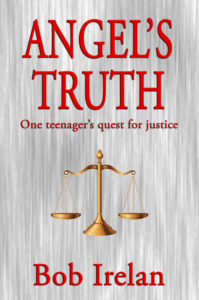


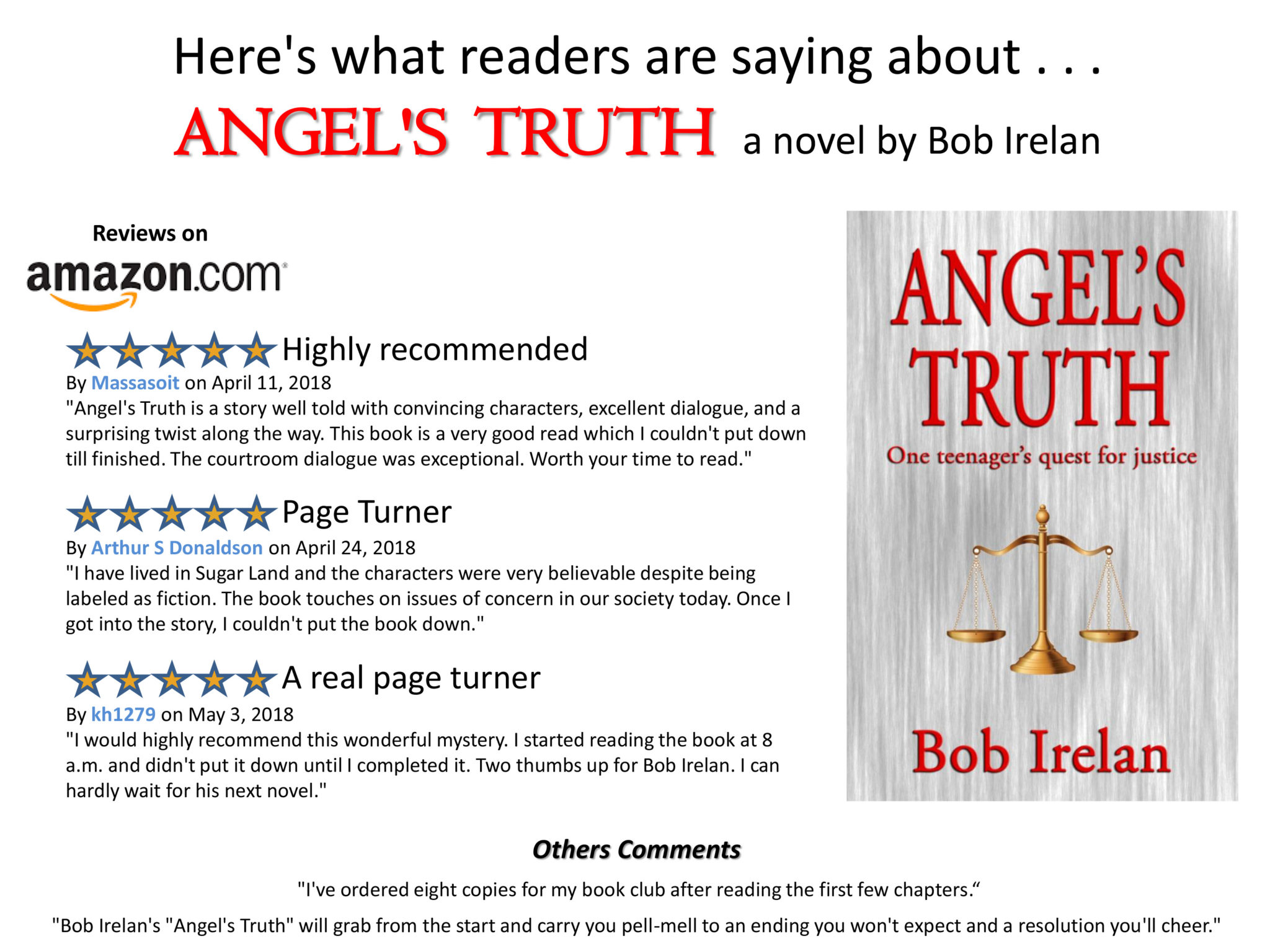
The murder mystery starts when Angel Gonzales is charged with heinous crimes that law enforcement, the media, and most folks in Richmond, Texas, and surrounding communities are certain he committed.
The crimes and trial dwarf anything that has happened in that part of the Lone Star state in anyone’s memory.
When, against all odds, the jury renders “not guilty” verdicts, shock escalates to anger.
In the minds of many, justice has failed, and a brutal criminal is being set free. For Angel and his court-appointed public defender, Marty Booker, being judged “not guilty” isn’t enough.
Together and with help from an unanticipated source, they attempt to prove Angel’s innocence.
In the process, they butt up against prejudice, deceit, and a sheriff and district attorney who put politics, ambition, expedience, and arrogance above responsibility to do their jobs.
It’s a story of horror, hatred, belief, and persistence – a story of a Mexican-American teenager who nearly loses his life on the way to becoming a man.
Outer Banks Publishing Group author Bob Irelan hopes his novel, Angel’s Truth will help people realize that justice is not always applied fairly, especially when it to comes to racial minorities
Angel’s Truth Amazon Reviews pdf
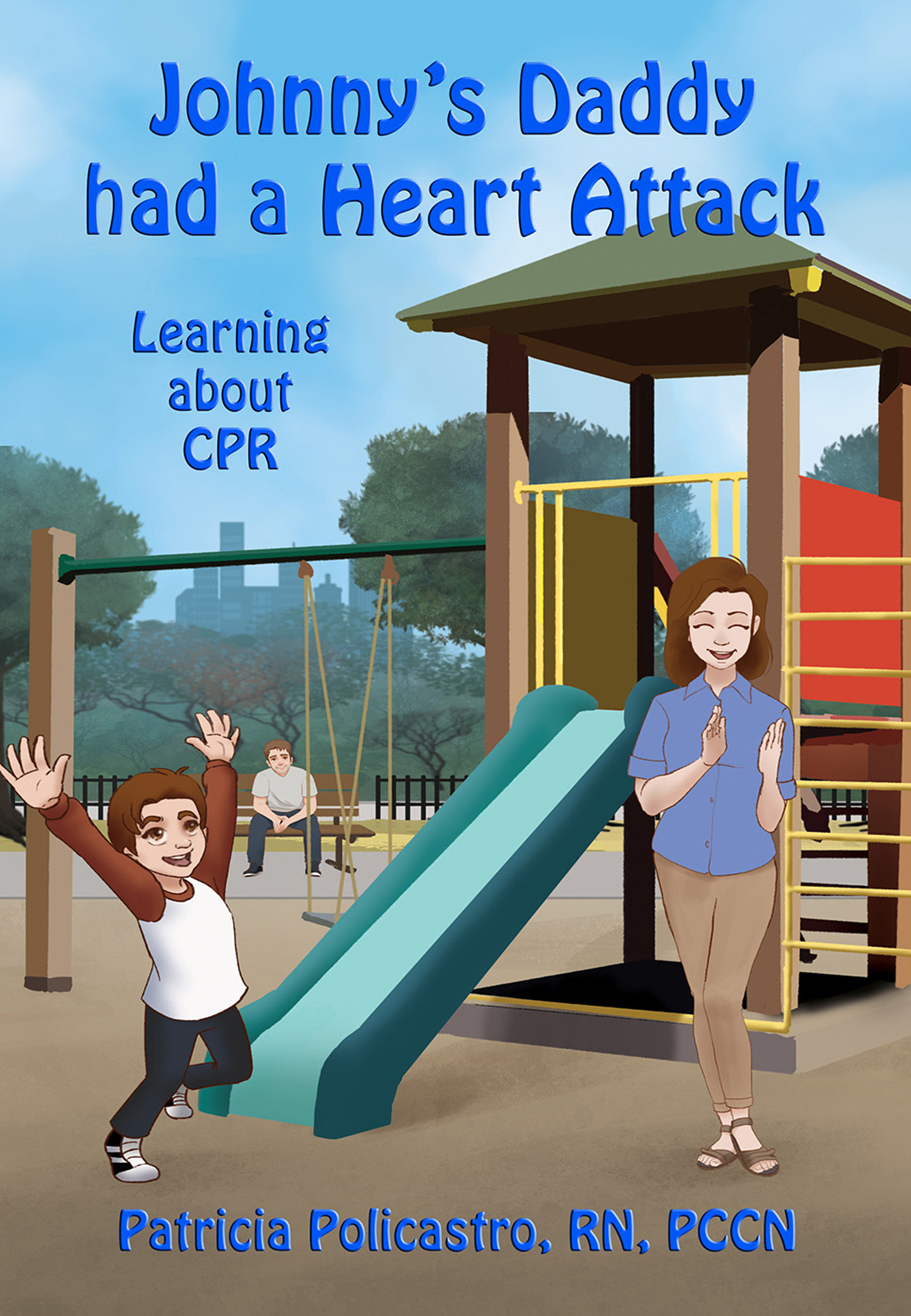
We are excited to publish Patricia Policastro’s first children’s book, Johnny’s Daddy had a Heart Attack, which illustrates how EMTs administer CPR and save people in critical health situations.
In this interview Ms. Policastro, a critical care RN, tells us how she hopes her book will help children understand and cope with an emergency in their family or anywhere.
And the best part is 10% of the profits from the book sales will go to the American Heart Association.
I was inspired to write this story by a friend’s husband who had a heart attack when their son was a young age. He did not receive CPR, as he didn’t lose consciousness, but he had chest pain and suddenly did not feel well. He ended up at the hospital with stent placement. Just thinking about their situation inspired me to try to help children in some way. As a nurse, we are always teaching and what better than to teach about a life saving intervention.
Why would this story help children? What is the purpose of the story?
If a child witnesses a similar event, hopefully they will recall what they have learned from the story and have more of an understanding of what is happening during the event, rather than not knowing and feeling scared. The target audience is children ages 4 through 12. My hope and the purpose is to reduce their fear and anxiety during an emergency.
What does the story accomplish? What do you hope to accomplish?
I hope to start children learning about health and life-saving measures at an early age. This story will introduce children to an emergency which necessitates calling “911” and how CPR intervention and an AED (Automated External Defibrillator) helps the human body.
I hope to advocate for people with heart disease by teaching children more knowledge about it and possibly, in their future, when they are older, they might want to become CPR-certified and possibly save someone someday!
How did you research information for the story? Did you have experience in health care or working with children? Have you had to perform CPR?
I am a registered nurse who had experience working on a step down unit for open heart surgical patients, as well as experience working on a Medical-Surgical unit, a Telemetry unit, with some Critical Care experience. It is required to be BLS certified (Basic Life Support) which is inclusive of CPR training. Unfortunately, I have had to apply CPR to some of my patients, and it is a stressful and emotional situation.
The only experience I had working with children, quite frankly, was at a daycare center while I was attending nursing school, but not in a nursing capacity. However, I still felt I could relate to how they would feel and react during an emergency and wanted to try to help in some way.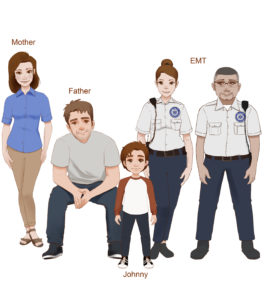
How long did it take you to write the story?
I have been working on this project over several years, believe it or not. I would work on it, then put it aside, of course, because life gets in the way at times. One of the main barriers to finishing the book was finding an illustrator within my budget. Once I was referred to an illustrator, the completion of this story really began to come together.
Did anyone help you or advise you?
Yes, of course! I feel you should always seek advice or help when you need to. That is also part of being a nurse. I approached a former coworker who now owns his own company, where he trains for BLS certification. He willingly offered his employees’ time to help by modeling the CPR positions so I could photograph them, and I then sent the photos onto the illustrator. The illustrator, I feel, was creative in capturing the fine details of my scene descriptions. I also pursued an opinion from one of the interventional cardiologists I work with, who suggested that there were still some technical terms which needed to be simplified for better understanding. But much direction and advice I attribute to my publisher, Outer Banks Publishing Group. After recommending an illustrator, my publisher really gave me the incentive to continue with and complete my project.
Have you written any other stories?
This is my first story. I was inspired by a friend’s health situation. I remember I began to write the story line when I was on the beach during vacation. It actually didn’t take me long to write it, but every time I had reviewed it, I felt the need to edit it. This occurred many, many times. I didn’t realize how difficult it is to get it just right with words children would be able to comprehend and a story line they could understand. You sort of have to put yourself in their mindset.
Will you write another story for children?
Yes, I would like to. I actually have several other story lines in mind, similar to this one whereby teaching children about other health emergencies a family member could experience or other health conditions people might have, but I would first like to see how this story, Johnny’s Daddy Had a Heart Attack, is perceived and accepted.
___________________________________________
Johnny’s Daddy had a Heart Attack
By Patricia Policastro
List Price: $10.99
7″ x 10″ (17.78 x 25.4 cm)
Full Color Bleed on White paper
36 pages
Outer Banks Publishing Group
ISBN-13: 978-1732045200
ISBN-10: 1732045208
BISAC: Fiction / Family Life
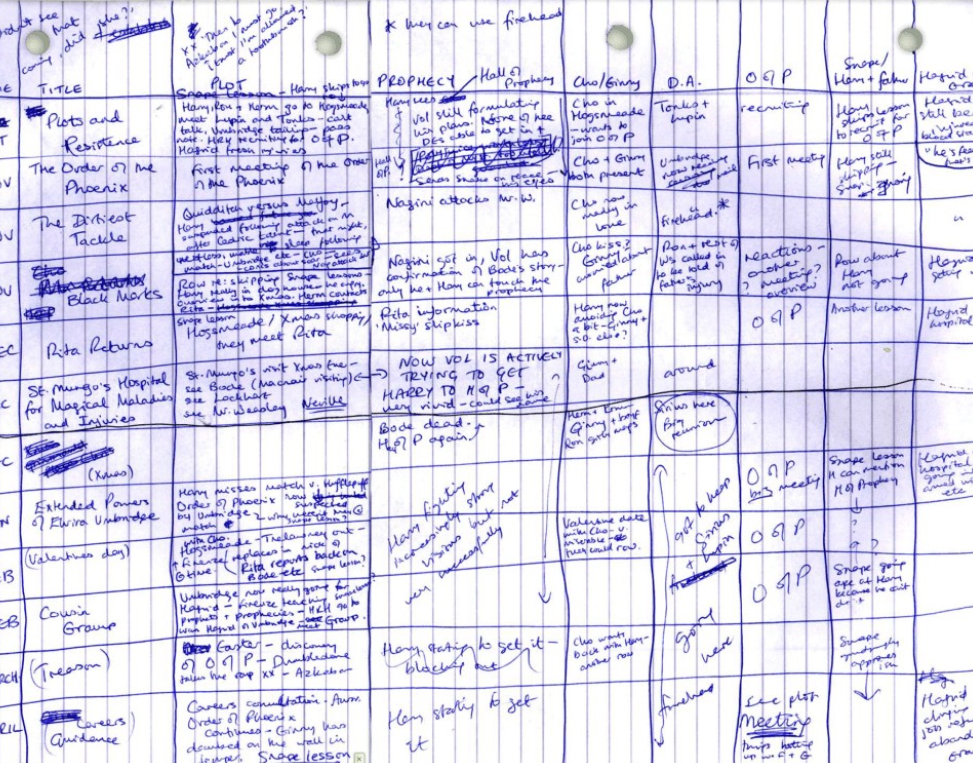
Republished in part from Medium.com
Welcome to Wonky & Technical, a multipart multimedia project that explores the surprisingly technical side of creativity. In the first episode, I sit down with Dyrk Ashton to talk about fiction, spreadsheets, and the work that goes into making things feel right. In the first article (below), I take a deep dive into creative spreadsheets and how data organization can be a critical part of the creative process.
Writing is a strange beast.
Everyone writes. We text, we send postcards, and we write quarterly reports. We send an average of 205 billion emails per day, and we send those emails quickly and nigh constantly. Our world runs on writing things down.
At the same time, though, we’re spectacularly bad at it. Students struggle with basic essays, professionals can barely write a scope statement, HR departments terrorize entire buildings with feel-goody gibberish.
And fiction? Oh, fiction is a mess.
Pick up your favorite book. Grab some paper. Look for inconsistencies. Almost every popular series has at least one plot hole. The same goes for the classics. It’s ugly.
The Hobbits didn’t give the ring to the Great Eagles, Harry Potter never abused time-turners, and for whatever reason the Bugger queens never moved off the home world. Indie books are lucky to hit the market without typos on the first page.
These huge errors aren’t common due to laziness, though; logistical error rates are high because humans are error-prone machines. As projects grow, error rates increase, and books are pretty damn big. Check the numbers.
The average book is 90,000 words long. If you’re a genre fiction junkie like me, the average word counts are even higher. Malazan and Wheel of Time both clock in around 3 million words. GOT sits, unfinished, at a cool 1.77 million. The web series Worm is an unbelievable 1.68 million words long, and Sanderson keeps throwing an integer overflow error.
In terms of man-hours, a single book can represent hundreds of hours. An entire series? Thousands. Even the most organized people around make big mistakes when they have that much rope to hang themselves with.
So why the hell is everyone so obsessed with creativity?
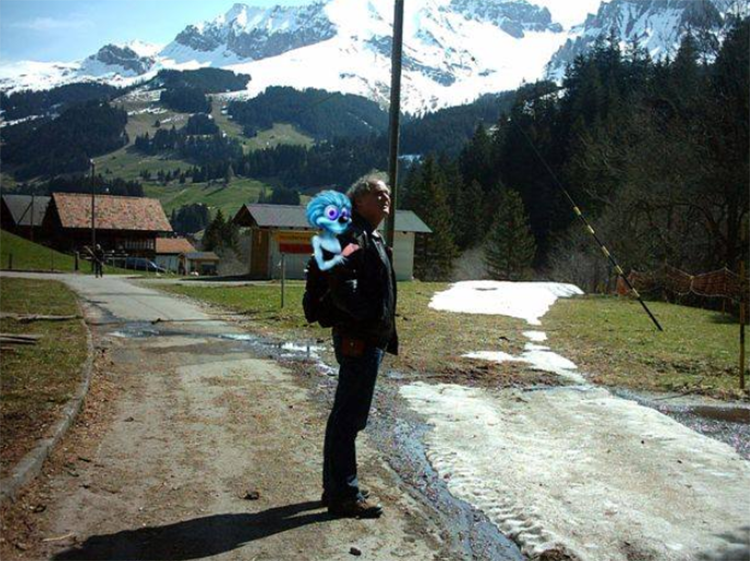
Outer Banks Publishing Group (OBXPG) recently signed Dutch author Koos Verkaik’s Alex and the Wolpertinger children’s series. The first book in the seven-book plus series, The Monster Inn, will be published in May/June.
Koos is the author of over 60 books from children’s series to scfi. He is also the author of the Saladin the Wonder Horse children’s series also published by OBXPG. Koos announced the news to Alex and characters in the series. Their conversation follows.
“Hey, Alex… have you heard the big news?”
“Oh yes, Ludo the wolpertinger! Our stories are published in the USA now by Outer Banks Publishing Group!”
“All these crazy adventures we’ve gone through! In Cloverland, the land of giants… and in the mysterious Downhills, where you come from, wolpertinger…”
“Yeah, the Downhills… That’s where I live – that’s where the dragons and the monsters are!”
“In Cloverland I came upon Ruff Rumble, the giant prince. Remember, Ludo?”
“He took you to his castle, Robber’s Nest and set you to work in the kitchen…”
Yes! That is where it all started! A magician came to Robber’s Nest. His name is Halo. When Ruff Rumble hears that Halo is able to make gold, he holds the magician prisoner…
Magician Halo asks Alex to help him. Alex must go to a wizard in the mysterious Downhills, where monsters, dragons and wolpertingers live…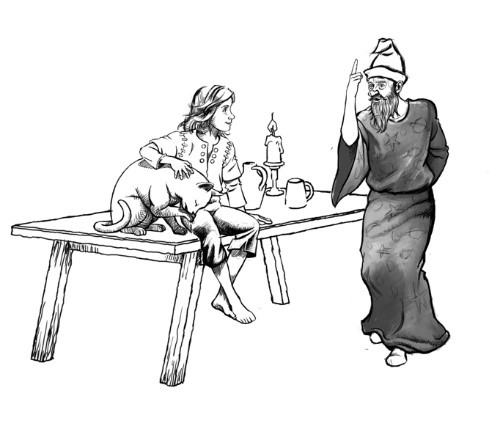
Alex and Princess Barbara enter the Downhills and make friends with Ludo the wolpertinger
First they go to the Monster Inn, where all the odd travelers of the Downhills meet…
Oh, all those strange creatures: monsters, dragons, wolpertingers… giants…
Uncle Balloon, the flying mammoth, Fabulus the magician…
Huge lizards, lobsters, toads, beetles, turtles…
The Magic Oak – the only entrance to the mysterious Downhills…
Welcome to the Monster Inn – come in and meet all the characters from the exciting series of children’s books Alex and the Wolpertinger!
But remember…never trust a wolpertinger! For wolpertingers only give you trouble! A long time ago, there was a boy who made friends with a wolpertinger. That was Alex, the boy from the Alps, who lived in the land of the giant King Clover and traveled through the Downhills – together with Ludo the wolpertinger. They had many wondrous adventures, and this is how they met.
Outer Banks Publishing Group will publish the following titles:
The Monster Inn
The Downhills
Uncle Balloon
The Land of Fringe
The Dragon Garden
Rusty Iron
Three Mad Princes
(and… more titles to come!
You can read more about Koos Verkaik and his books here.
 |
| Stephen Hawking Elon Musk Bill Gates |
 |
| Terminator |
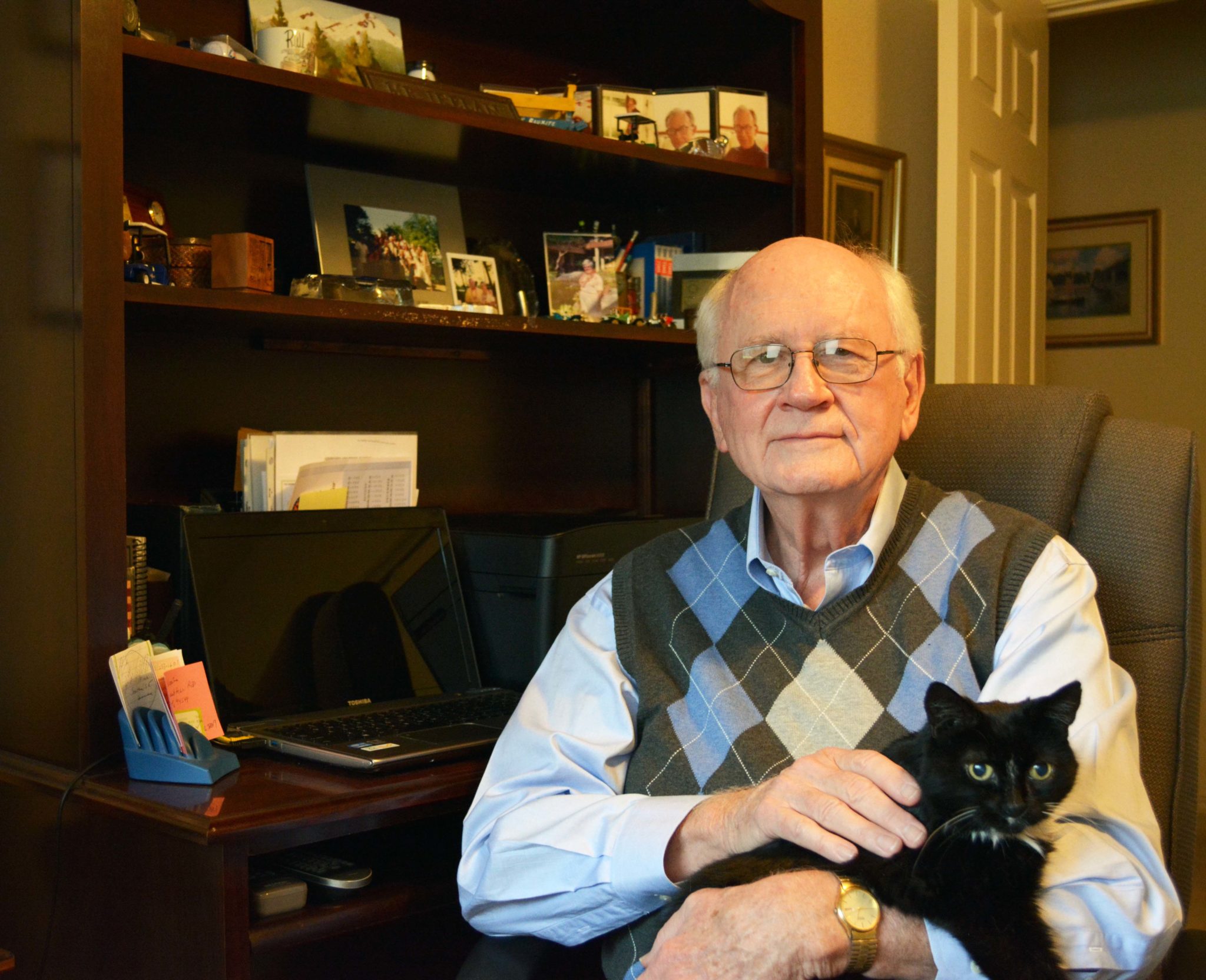
In this interview with Outer Banks Publishing Group author Bob Irelan, he reveals what inspired him to write the novel, Angel’s Truth and hopes to help people realize that justice is not always applied fairly, especially when it to comes to racial minorities.
 Bob, this is your first novel. What inspired you to write it?
Bob, this is your first novel. What inspired you to write it?
Writing was a large part of what I did during my career — first in journalism and then in public relations/communications. But, until this book, I had always dealt with facts. Reading fiction was my release and I have always appreciated a story well told. In retirement, I found the time to attempt writing this novel. It’s liberating to shape a story, make it believable, but not be bound by actual happenings. With respect to the plot, I’ve most always rooted for the underdog. For me, the character Angel Gonzales fills that role in his fight for true and lasting justice.
Were the characters inspired by real life people?
Public Defender Marty Booker was shaped at least in part by a public defender I was exposed to years ago as a member of a jury. I was impressed by how hard he worked on behalf of his client, a minority. Angel and the others were creations of my imagination.
You started your career as a journalist and then moved into corporate public relations and communications. How did you research the information for the story? Did you have any experience in the justice system?
I have to admit I didn’t do a lot of research. I lived in Sugar Land, TX, near Richmond, where the story takes place. Those locations and nearby Rosenberg are real but my description of them — most of the buildings, the park, etc. — is made up. I decided to create a setting that would work with the story I wanted to tell. My knowledge of the justice system is limited, but it’s drawn from jury service, a lifetime of reading and viewing courtroom dramas, and having a father who was a lawyer and a U.S. Attorney.
How long did it take you to research and complete Angel’s Truth?
The better part of a year, although I sometimes took breaks of a week or two. I admire writers who discipline themselves to a daily schedule. I’m sure that’s a more efficient approach than the one I followed.
I wanted to make the point that the truth often is not obvious; that finding it takes persistence, commitment and, if you’re lucky, some help from unanticipated sources. I also wanted to remind the reader about how, too often, justice is unevenly applied — especially as it relates to racial minorities. We’re not yet where we need to be as a fully inclusive society. Despite this, I wanted to write a story where hard-fought truth prevails.
Will there be a sequel? Will you write another book?
I’m not sure, but probably. I found the challenge of creating a plot and developing the characters to give it life very stimulating. Also, in writing this first novel, I overcame some personal doubts and uncertainties. For instance, I had not really written dialog before so that took some learning. The reader will judge whether I succeeded.
Do you prefer fiction or nonfiction and why?
I don’t have a preference. l love biographies and works of history. But I also love fiction, especially mysteries and those that include some courtroom drama. I admire greatly those who write well, those who can draw a picture for the reader. I love a book that grabs my attention and leaves me wondering how the heck the author came up with this or that idea.
Who are your favorite authors and did any inspire you to write Angel’s Truth?
I like John Grisham, Mark Sullivan, David Baldocci, Dan Brown, to name a few. I also like historical novels by authors like Ken Follett, Erik Larson, and Anthony Doerr. In my mind, they are all amazing story tellers. And, yes, I drew inspiration from all of them as well as others.
As a first-time novelist, do you have any advice for potential authors starting their first book?
Yes. Just start writing. Don’t wait until you have everything figured out before you start. Don’t be deterred by not knowing at the outset how your story is going to end. Keep writing and see where your imagination takes you. Learn from the words and phrasing of writers you admire. Bounce ideas and text off people whose judgment you respect — those who will tell you if something is good or not. Take breaks when you need to but commit yourself to a finished product. You’ll be glad you did.
Is there anything you would like to add?
Take your time. Don’t rush the process. This was advice I got from an experienced, successful pro, and it proved to be very helpful. Don’t be shy about asking for help. There are a lot of smart people out there willing to hold your hand on this exciting journey.
___________________________________
Angel Gonzales is charged with heinous crimes that law enforcement, the media, and most folks in Richmond, Texas, and surrounding communities are certain he committed.
The crimes and trial dwarf anything that has happened in that part of the Lone Star state in anyone’s memory.
When, against all odds, the jury renders “not guilty” verdicts, shock escalates to anger.
In the minds of many, justice has failed, and a brutal criminal is being set free. For Angel and his court-appointed public defender, Marty Booker, being judged “not guilty” isn’t enough.
Together and with help from an unanticipated source, they attempt to prove Angel’s innocence.
In the process, they butt up against prejudice, deceit, and a sheriff and district attorney who put politics, ambition, expedience, and arrogance above responsibility to do their jobs.
It’s a story of horror, hatred, belief, and persistence – a story of a Mexican-American teenager who nearly loses his life on the way to becoming a man.

From The Six Main Arcs in Storytelling, as Identified by an A.I. by Adrienne LaFrance, published in The Atlantic
Based on author Kurt Vonnegut’s 35-year-old master’s thesis that every story has a narrative shape, a group of researchers from the University of Vermont and the University of Adelaide collected computer-generated story arcs for nearly 2,000 works of English language fiction and classified each into one of six core types of narratives based on what happens to the protagonist.
The researchers’ focus was on the emotional trajectory of a story, not merely its plot. They also analyzed which emotional structure writers used most, and how that contrasted with the ones readers liked best.
They used a collection of fiction from the digital library Project Gutenberg, they selected 1,737 English-language works of fiction between 10,000 and 200,000 words long.
Then, they ran their dataset through a sentiment analysis to generate an emotional arc for each work.
The most-prevalent six narratives the data revealed are:
1. Rags to Riches (rise)
2. Riches to Rags (fall)
3. Man in a Hole (fall then rise)
4. Icarus (rise then fall)
5. Cinderella (rise then fall then rise)
6. Oedipus (fall then rise then fall)
So if you have the proverbial writer’s block consider one of the six narratives to free your story.
Read the rest of the story from The Atlantic>
Kurt Vonnegut explains his thesis of the shape of the narrative.
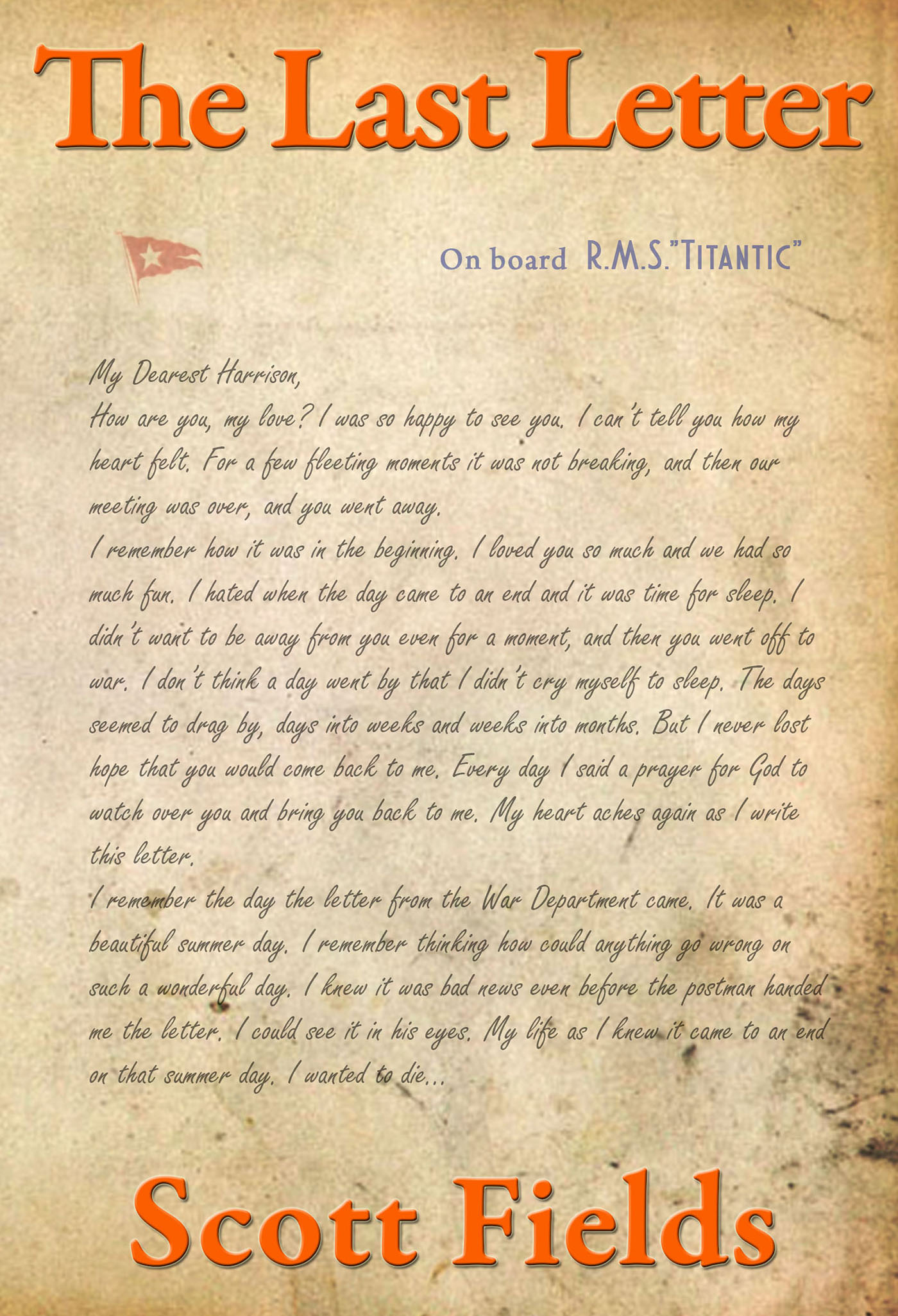
From her watery grave at the bottom of the Atlantic Ocean, the Titanic, even today, guards secrets of the past.
A woman, reportedly died that fateful night when the Titanic sunk, and yet she lived until the year 1995. Why did she feign her death all those years ago, and now after she’s gone, why is she trying to send a message to the living?
This is the untold story about the Titanic that has been kept secret for over one hundred years.
THE LAST LETTER is novel about two people drawn together by the hand of a woman that neither had ever met. Together, they set out to fulfill the unconsummated relationship of two people who met and fell in love over one hundred years before.
5.5″ x 8.5″ (13.97 x 21.59 cm)
Black & White on White paper
232 pages
Outer Banks Publishing Group
ISBN-13: 978-0990679073
ISBN-10: 0990679071
BISAC: Fiction / Romance / Paranormal